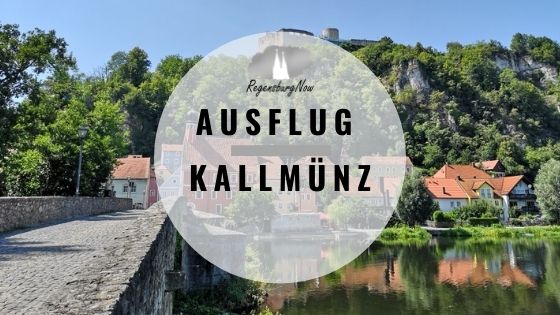
Kallmünz
BIKE TOUR TO KALLMÜNZ!
Kallmünz is one of our favorite places in the Regensburg district. We recently went there again by bike and can only recommend a trip to Kallmünz. A whole weekend is best, because Kallmünz is almost like a short vacation in Italy… The picturesque village is located approx. 28 km north of Regensburg at the confluence of the Naab and Vils rivers. Incidentally, Markt Kallmünz became famous thanks to a number of artists who spent time here in search of inspiration and motifs. The painter and professor Charles Johann Palmié discovered Kallmünz in 1901, making him a pioneer of the local art scene. He was followed shortly afterwards by another famous artist, Wassily Kandinsky, who had become aware of Kallmünz through a postcard. In June 1903, he came by bicycle from Regensburg to Kallmünz to hold his summer painting school here.
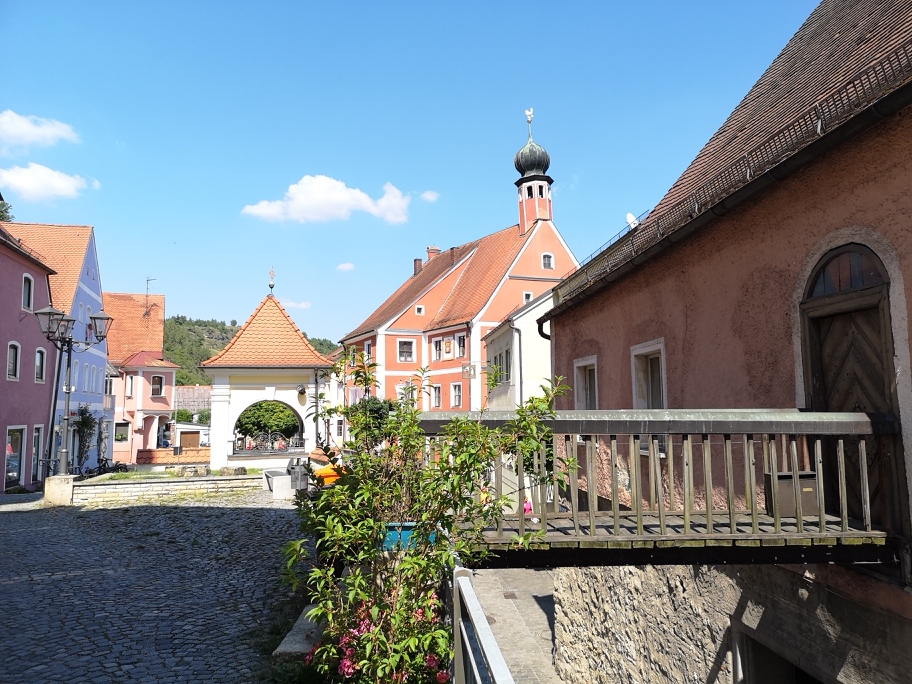
His pupil and fiancée at the time, the artist Gabriele Münter, also followed him to Kallmünz. She later bequeathed paintings by Kandinsky that had been created in Kallmünz to the Lenbachhaus in Munich.
Kallmünz acted as a magnet for artists from an early stage – no wonder, as Kallmünz is also known as “The Pearl of the Naab Valley”. Art is still omnipresent in Kallmünz today. There is something to discover on every corner.
But now to our bike tour:
The starting point is the Eiserne Steg in Regensburg. From here, follow the Danube cycle path past the Westbad swimming pool to the Mariaort railroad bridge.
Opposite, we see the pilgrimage church of Mariaort and the Naabspitz, where the Naab flows into the Danube.
Here, we cross the Danube and, after a steep downhill section after the bridge, follow the signs for the Naabtalradweg/Fünf Flüsse Radweg to the left.
We continue along the Naab to Etterzhausen. In summer, you can enjoy a nice swim in the Naab here.
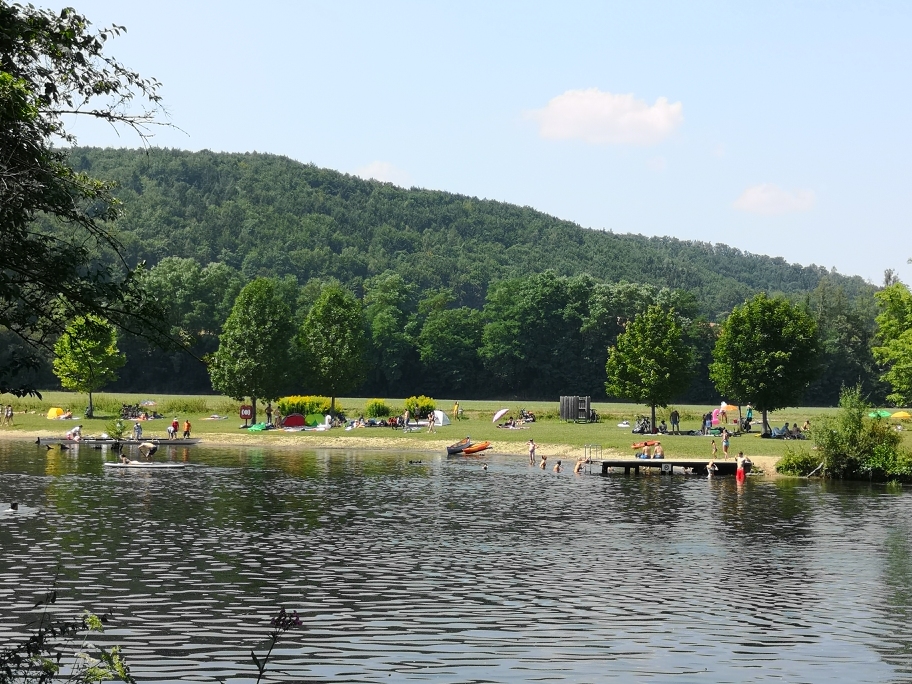
In Etterzhausen, we follow the signs, turn right and cross the road.
We continue briefly along the cycle path and then cross the road again and turn left. The path continues idyllically along the other bank of the Naab, alternating between a shady section through the forest and the beautiful Naab valley. We pass the campsite in Distelhausen and follow the signs to Pielenhofen. Here, too, there is a bathing area opposite the beautiful Pielenhofen monastery. A short stopover is worthwhile. There is a refreshment stop opposite in the Klosterwirtschaft Pielenhofen. We have already covered 17 km, with another 11 km ahead of us.
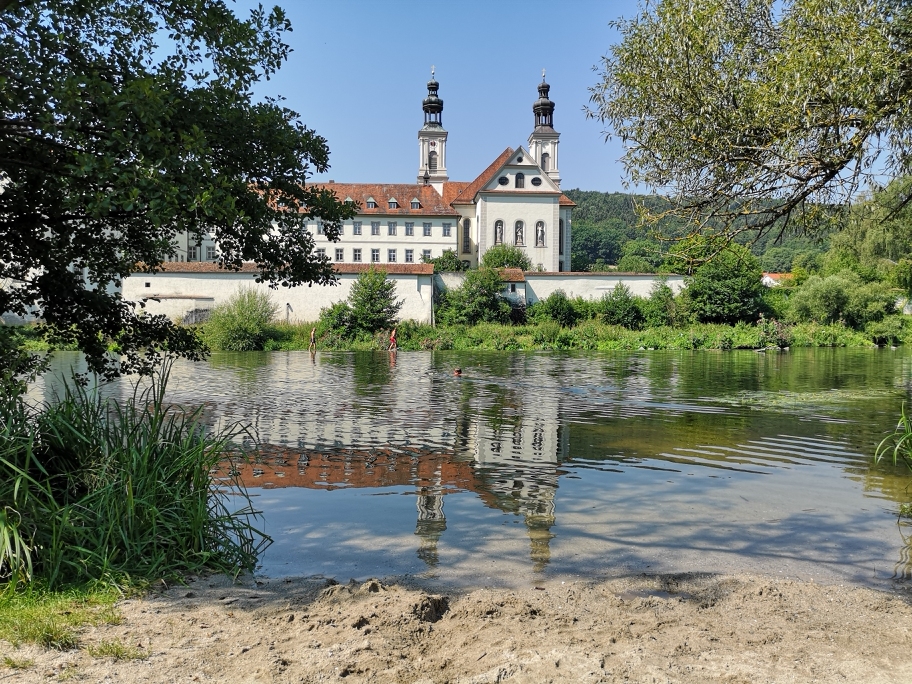
From Pielenhofen, the route continues along the Naab via Duggendorf to Heitzenhofen. Here there is an old water mill and Heitzenhofen Castle, which houses a hotel. Continuing via Krachenhausen, we finally reach Kallmünz.

As you approach Kallmünz, you can already see one of the town’s sights from afar: a ruined castle towers over Kallmünz on a rocky outcrop. First mentioned in a document in 983, “Calminz” was built in 1130 and later used by the Wittelsbach dukes to secure the ore and salt trade between Regensburg and Amberg. But the Celts already used the area for defense. The castle was destroyed in 1641.
Incidentally, from up there you have a wonderful view over the Naab valley. Once in Kallmünz, we follow the signs and finally reach the romantic Stone Bridge (1549-1558) with its bridge saint Nepomuk. From here you have a good view of the castle and the confluence of the Vils and Naab rivers.

At the end of the bridge is the Old Town Hall dating back to 1603. It is best to leave your bikes in the square and continue on foot through the winding alleyways. On the left after the bridge, for example, you come to Vilsgasse. Right at the beginning, next to the church, is Schloss Raitenbuch, a charming hotel that also includes the Sunday café “Orangerie”. We spent the night there. The castle can be reached via a steep path by the church. A little further on in Vilsgasse, you can see the “house without a roof” on the right, which was built into a cave in the rock beneath the castle.

Discover art!
As mentioned above, Kallmünz is known for its art and artists. You can discover this right at the Stone Bridge, where there is a sculpture of an owl at the beginning of the bridge.
Bauchstechala and Zoigl!
Bauchstechala and Zoigl are a specialty in Kallmünz. Bauchstechala are Schupfnudeln and the best can be found at Bürstenbinder, supposedly the smallest pub in the Upper Palatinate. Here in the “First Upper Palatinate Bauchstechala Manufactory”, this dish is especially honored. The small pub also serves home-brewed Zoigl beer. Zoigl is a bottom-fermented beer that is brewed in the traditional way. Incidentally, the Upper Palatinate Zoigl culture is an intangible cultural heritage. Address: Zum Bürstenbinder, Am Graben 5, 93183 Kallmünz
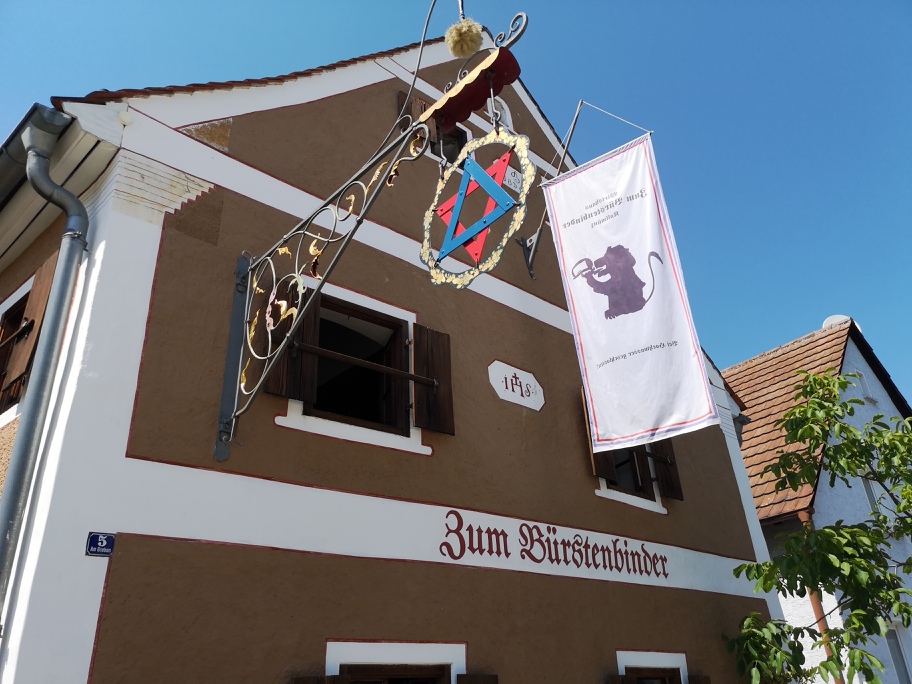
Incidentally, the Bürstenbinder and Raitenbuch Castle belong to the Luber family, who are the 6th generation to own the wonderful “Zum Goldenen Löwen” inn in Kallmünz. You can also spend the night there (Alte Regensburger Str. 18).
Have fun discovering!
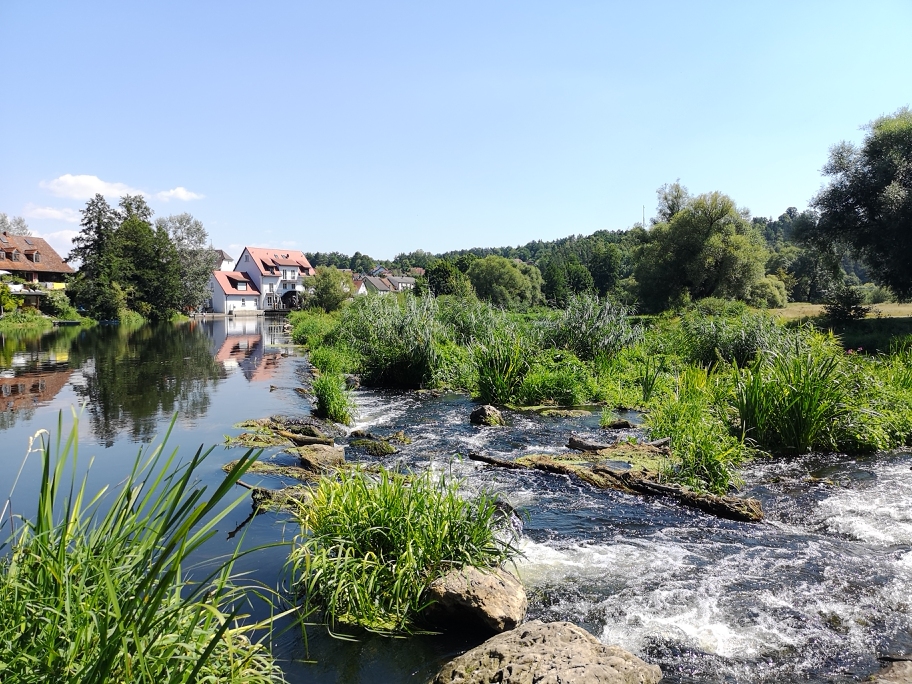
(unpaid advertising due to attribution. Photos: RegensburgNow | Annette Ebmeier)

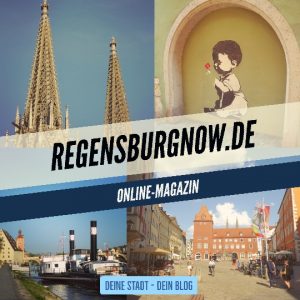
(unpaid advertising due to naming and shaming)
Our excursion tips on Facebook:
Do you already know our Facebook group “Excursion tips in and around Regensburg plus Upper Palatinate” with more than 22,000 members? Click here for the group.
RegensburgNow.de has over 40,000 readers per month and is a site of the RegensburgNow agency
If you are interested in advertising on RegensburgNow, please write to us at mail@regensburgnow.de
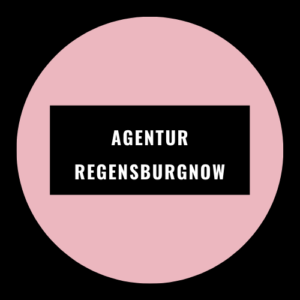
Don’t miss a thing! Subscribe to our newsletter:
Want more tips? Then please click here:


















